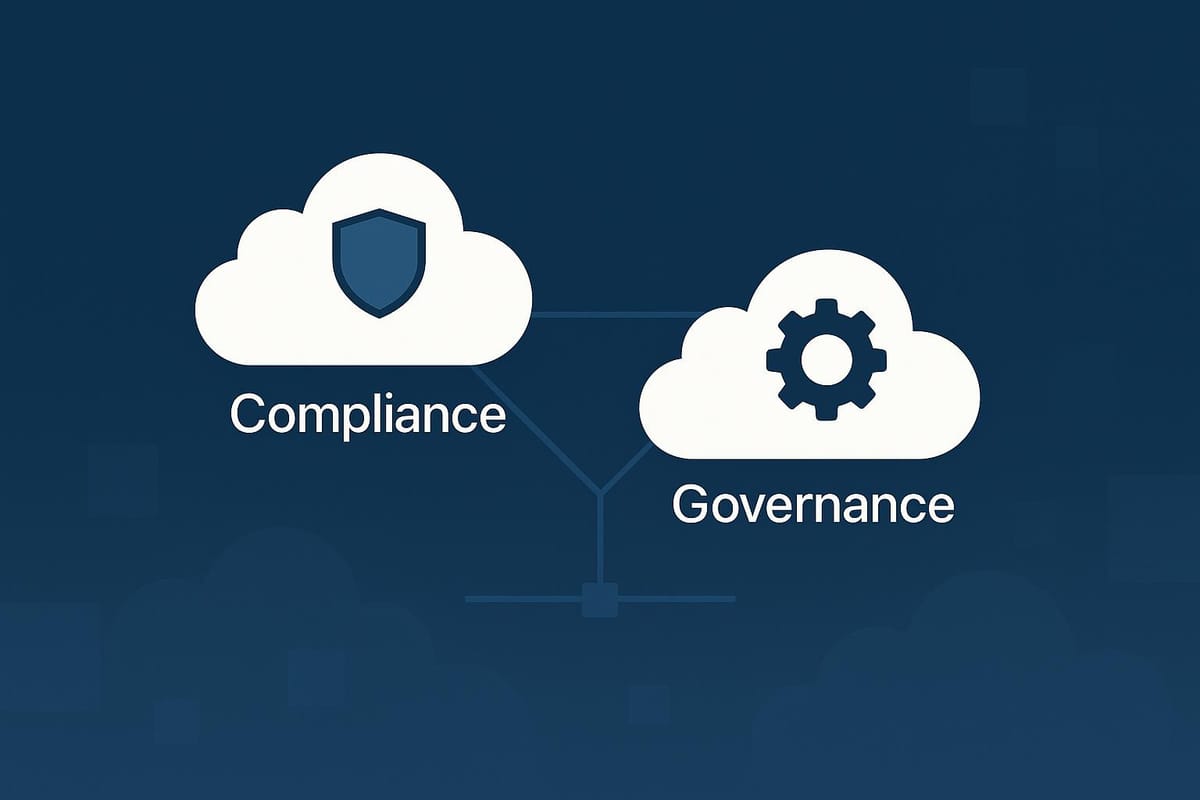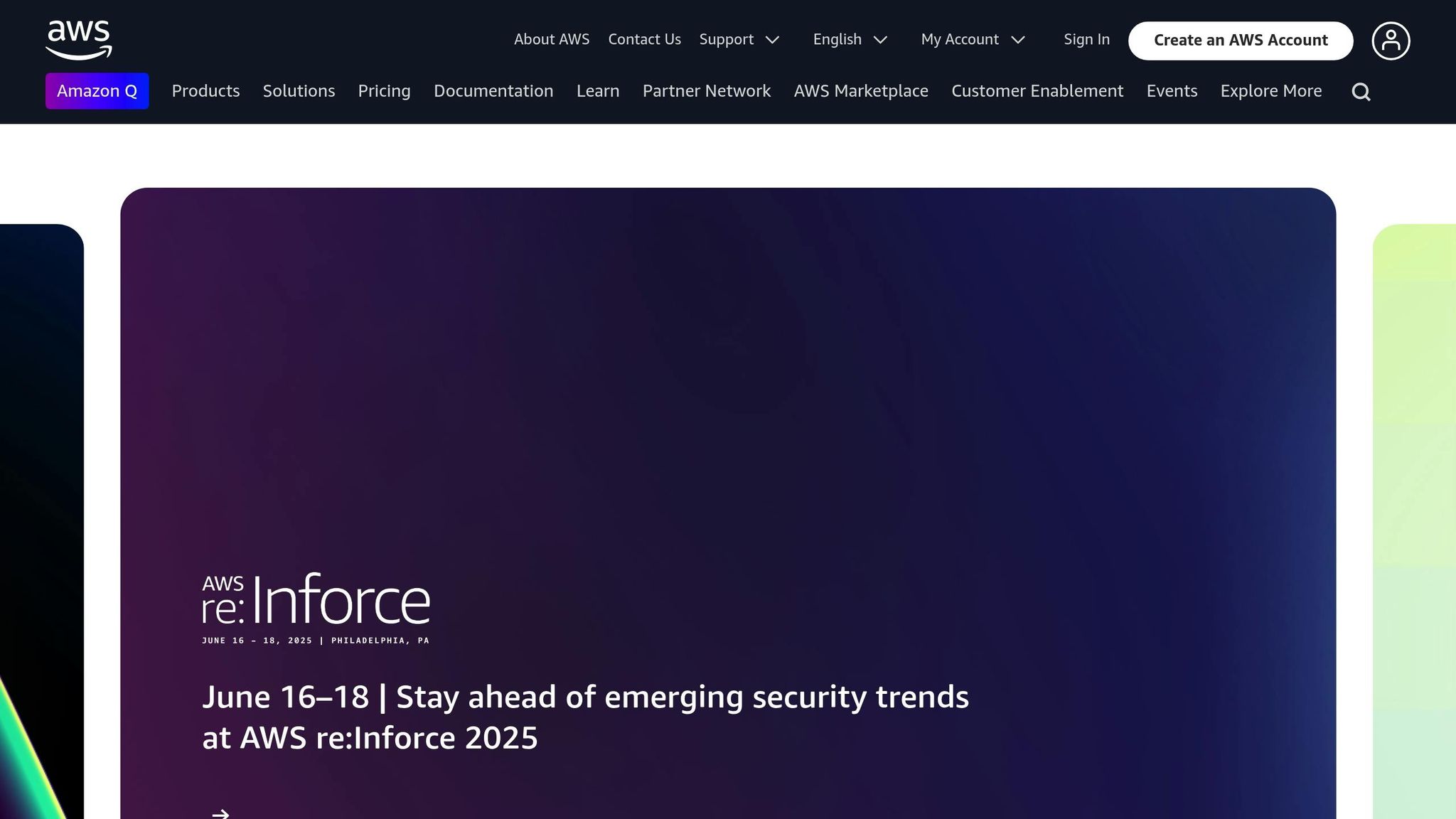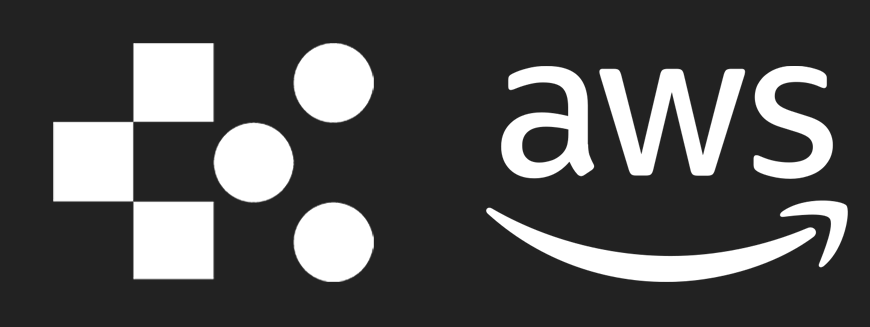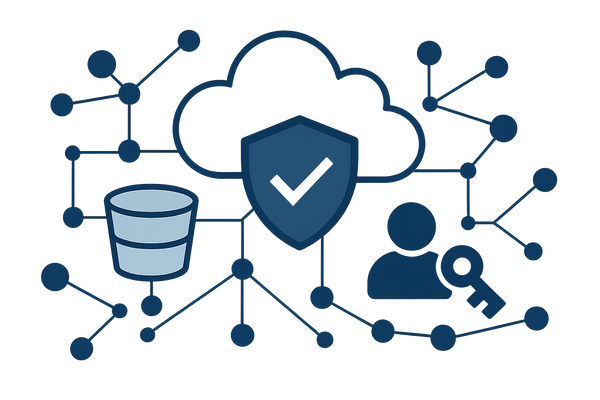AWS Compliance vs. Governance: Key Differences
Explore the crucial differences between AWS compliance and governance, and learn how to effectively manage your cloud resources in regulated industries.

AWS compliance ensures your business meets external regulations like GDPR, while AWS governance focuses on internal policies for managing cloud resources effectively. Both are vital for UK organisations, particularly in regulated industries, to maintain secure and efficient operations.
Key Points:
- Compliance: Meeting legal and industry standards (e.g., GDPR, HIPAA).
- Governance: Setting internal controls to align AWS usage with business goals.
- AWS Tools: Services like AWS Config, IAM, and Audit Manager support both compliance and governance needs.
- GRC Framework: Combines governance, risk management, and compliance for a unified approach.
Quick Comparison:
| Aspect | AWS Compliance | AWS Governance |
|---|---|---|
| Focus | External regulations | Internal policies |
| Scope | Industry/regional standards | Organisational AWS management |
| Timing | Periodic audits | Continuous monitoring |
| Stakeholders | Regulators, auditors | IT leaders, department heads |
| Key Tools | AWS Audit Manager, Config Rules | AWS Organisations, Service Control Policies |
To manage AWS effectively, UK businesses must integrate compliance and governance strategies. Use AWS tools to automate monitoring, enforce policies, and maintain audit readiness. Regular reviews and training ensure your framework evolves with regulatory changes and business growth.
AWS Compliance and Governance Basics

AWS Compliance Explained
AWS compliance ensures businesses meet external regulatory standards and industry requirements. For UK organisations, this includes adhering to the UK GDPR, the Data Protection Act 2018, and specific industry rules like HIPAA.
Additional Compliance Details
| Area | Requirements | Implementation |
|---|---|---|
| Data Protection | UK GDPR, data sovereignty | Automated monitoring |
| Healthcare | HIPAA | Security and audit controls |
While compliance focuses on meeting external rules, governance is about setting internal policies to manage AWS resources effectively.
AWS Governance Explained
Governance in AWS involves creating internal controls and policies to manage and use cloud resources responsibly. This ensures AWS operations align with business goals while addressing potential risks.
Key aspects of governance include:
- Using tagging and cost allocation for resource tracking
- Enforcing role-based access through AWS Identity and Access Management (IAM)
- Setting baseline security configurations
- Automating monitoring to detect policy violations
GRC Framework Overview
A GRC (Governance, Risk, and Compliance) framework integrates external compliance requirements with internal governance strategies. This unified approach simplifies AWS management and ensures consistency.
| Component | Purpose | Implementation |
|---|---|---|
| Governance | Internal controls and decision-making | AWS Organizations, Service Control Policies |
| Risk Management | Identifying and addressing threats | AWS Security Hub, GuardDuty |
| Compliance | Meeting regulatory standards | AWS Config Rules, Audit Manager |
Key GRC Practices:
1. Policy Development
Define clear, actionable policies for how AWS resources should be used.
2. Risk Assessment
Use AWS Security Hub to regularly evaluate risks, uncover vulnerabilities, and address compliance gaps.
3. Documentation
Maintain detailed records of compliance activities and governance decisions with automated logging tools.
Regularly reviewing and updating the framework ensures it stays effective as regulations and business needs change.
AWS re:Invent 2023 - How to customize AWS compliance and ...
Differences Between AWS Compliance and Governance
Managing AWS effectively requires a clear understanding of compliance and governance. While they complement each other, they address different needs and objectives. Here's a breakdown of how they differ:
| Aspect | AWS Compliance | AWS Governance |
|---|---|---|
| Primary Focus | Meeting external regulations and standards | Enforcing internal policies and controls |
| Scope | Aligning with industry or regional standards | Managing AWS resources across the organisation |
| Timing | Periodic audits | Ongoing monitoring and enforcement |
| Decision Making | Driven by regulatory requirements | Guided by organisational goals |
| Key Stakeholders | Regulators, auditors, compliance officers | Board members, IT leaders, department heads |
| Documentation | Audit trails, compliance reports | Policy documents, operational procedures |
| Tools | AWS Audit Manager, AWS Config Rules | AWS Organisations, Service Control Policies |
| Risk Focus | Avoiding regulatory penalties | Mitigating operational and business risks |
For UK organisations, particularly those in regulated industries, it's crucial to meet external compliance obligations while maintaining strong internal governance over AWS resources.
Understanding these differences helps create AWS strategies that address both regulatory needs and operational priorities. In the next section, we’ll discuss how to bring these two approaches together in your AWS environment.
Combining Compliance and Governance in AWS
Bringing compliance and governance together in AWS requires a clear plan that tackles both regulatory needs and internal controls. For small and medium-sized businesses (SMBs), this approach is key to keeping systems secure while improving operational performance.
AWS Responsibility Model
The AWS Shared Responsibility Model outlines specific roles, helping clarify who is responsible for what when it comes to compliance and governance:
| Responsibility Area | AWS Handles | Customer Handles |
|---|---|---|
| Infrastructure Security | Physical datacentre security | Data encryption |
| Network Controls | Network firewall maintenance | Security group configuration |
| Compliance Documentation | Infrastructure certifications | Application compliance |
| Service Updates | Platform maintenance | Resource governance |
| Access Management | AWS IAM service availability | IAM policy implementation |
Steps to Implement
-
Set Up Baseline Controls
Use AWS Config to define resource configurations that align with compliance and governance needs. -
Enable Automated Monitoring
Activate AWS CloudTrail to track user and resource activities, providing audit logs and governance oversight. -
Structure Policies Clearly
Develop Service Control Policies (SCPs) to enforce compliance and governance rules. Organise these policies into levels:- Organisation-wide policies
- Department-specific controls
- Project-level requirements
These steps make use of AWS tools to ensure compliance and governance work hand in hand.
AWS Tools and Services
AWS offers several tools that simplify the process of integrating compliance and governance:
| Service | Primary Function | Benefits |
|---|---|---|
| AWS Control Tower | Account governance | Automated compliance checks |
| AWS Organizations | Multi-account management | Centralised policy enforcement |
| AWS Security Hub | Security posture monitoring | Unified compliance views |
| AWS Audit Manager | Evidence collection | Automated assessment reporting |
These services provide features like real-time monitoring, automated remediation, compliance reporting, and policy enforcement across accounts. Together, they make managing compliance and governance more efficient and effective.
Team Training for AWS Compliance and Governance
Building an effective team starts with proper training. This is especially true when it comes to navigating AWS compliance and governance frameworks.
Training by Job Role
Different roles within your team will need tailored training to focus on specific aspects of AWS compliance and governance. Here's a breakdown:
| Role | Focus Area | Suggested AWS Tools |
|---|---|---|
| Cloud Architects | Managing infrastructure governance | AWS Control Tower, Organisations |
| DevOps Engineers | Automation and monitoring tasks | CloudWatch, Config Rules |
| Security Teams | Implementing compliance controls | Security Hub, GuardDuty |
| Compliance Officers | Ensuring regulatory adherence | Audit Manager, Artifact |
Before diving into these specialised areas, ensure all team members have completed foundational AWS training. This creates a strong baseline for understanding compliance and governance tools.
Keeping Training Up to Date
AWS services and compliance requirements evolve constantly, so training must be a continuous process. Here’s how to stay on top of changes:
- Quarterly Reviews: Evaluate updates to AWS services and any changes to compliance regulations.
- Monthly Team Sessions: Use these to share best practices and discuss new governance insights.
- Annual Certifications: Encourage team members to renew their AWS certifications annually to keep their skills sharp and relevant.
Make sure these sessions and certifications are tailored to align with the specific regulatory requirements in the UK.
UK-Specific Compliance Training
For organisations operating in the UK, compliance training must address key national and sector-specific regulations. Here are some important areas to cover:
- Data Protection and GDPR: Focus on GDPR and UK data protection laws, including how AWS services can support secure data management.
- Sector-Specific Rules: For industries like finance or healthcare, include operational resilience, third-party risk management, data sovereignty, and secure data handling in your training.
- National Standards Alignment: Ensure your training aligns with UK cybersecurity standards and any relevant industry-specific frameworks.
Conclusion
Key Differences Recap
When it comes to AWS compliance and governance for SMBs in the UK's regulated sectors, the two serve distinct purposes. Compliance is about meeting external regulations like GDPR, while governance ensures your internal processes consistently align with those rules.
In practice, compliance often involves external checks and one-time assessments, whereas governance focuses on maintaining ongoing policies and internal controls. These differences shape the steps needed to strengthen your AWS setup.
Practical Steps for SMBs
To build on the compliance and governance concepts discussed, consider these actionable steps:
1. Define Responsibilities
Clearly document roles and responsibilities as outlined in the AWS Shared Responsibility Model. This ensures everyone knows their part in maintaining compliance and governance.
2. Utilise AWS Tools
Take advantage of AWS's built-in tools to simplify compliance and governance tasks:
- AWS Control Tower: Manage account governance.
- AWS Config: Monitor resource configurations.
- AWS Security Hub: Oversee your security posture.
- AWS Audit Manager: Continuously track compliance.
3. Set Up Regular Reviews
Establish a consistent schedule for assessments to stay on track:
- Conduct monthly internal audits to address immediate concerns.
- Schedule quarterly compliance reviews to ensure external requirements are met.
- Plan bi-annual governance framework assessments to refine internal policies.
- Include regular internal and external audits for comprehensive checks.
These steps provide a strong foundation for SMBs to secure their AWS operations while maintaining compliance and governance. As your business evolves or regulations shift, make sure these processes adapt accordingly.
For more detailed guidance tailored to UK-based SMBs managing AWS environments, check out AWS Optimisation Tips at https://aws.criticalcloud.ai. You'll find step-by-step resources to help streamline your efforts.
FAQs
How can organisations in the UK align AWS compliance and governance to meet regulatory requirements and improve operations?
To successfully integrate AWS compliance and governance, UK organisations should focus on addressing regulatory standards while maintaining efficient operational practices. Compliance ensures adherence to legal and regulatory requirements, such as GDPR or industry-specific standards, while governance focuses on establishing internal policies, controls, and best practices for managing AWS resources effectively.
Begin by defining clear compliance objectives based on applicable UK regulations, and map these to AWS services that support security, monitoring, and reporting. Simultaneously, develop a governance framework that includes access control, resource tagging, and cost management to optimise operations. Regular training for your team on both compliance and governance is essential to ensure that everyone understands their role in maintaining a secure and efficient AWS environment.
For small and medium-sized businesses, focusing on cost-effective solutions and automation can enhance both compliance and governance efforts. Leveraging expert insights, such as those provided by AWS-focused blogs, can help you stay informed about best practices tailored to SMB needs.
What AWS tools can help automate compliance and governance, and how do they work together?
AWS provides several tools to automate compliance and governance tasks, helping businesses maintain security and operational standards efficiently. Key services include AWS Config, which tracks resource configurations and ensures compliance with policies, and AWS CloudTrail, which records user activity for auditing purposes. AWS Organisations allows centralised management of multiple accounts, making it easier to enforce governance policies across your organisation.
These tools work together seamlessly. For example, AWS Config can monitor compliance in real-time, while CloudTrail logs actions for auditing. Organisations can enforce policies at scale, ensuring consistency across all accounts. By leveraging these services, teams can reduce manual effort, improve accountability, and focus on strategic goals.
What are the best ways to train teams on AWS compliance and governance, particularly for UK-specific regulations?
To ensure teams are well-equipped to handle AWS compliance and governance, particularly in line with UK regulations, focus on a combination of targeted training and practical resources. Start by providing regular training sessions on AWS-specific compliance frameworks, such as GDPR, and UK-specific standards like the Data Protection Act. This ensures your team understands both the technical and legal requirements.
Encourage hands-on learning through AWS tools like AWS Config and AWS Audit Manager, which can help teams monitor compliance and governance in real-time. Additionally, consider creating scenario-based workshops where teams can simulate compliance challenges and governance decision-making. Regular updates on evolving regulations and AWS best practices are also essential to keep everyone informed.
For small and medium-sized businesses, optimising training costs is crucial. Focus on leveraging free or low-cost AWS training resources and certifications to build expertise efficiently. By combining these approaches, your team can stay updated and effectively manage compliance and governance within the UK context.




